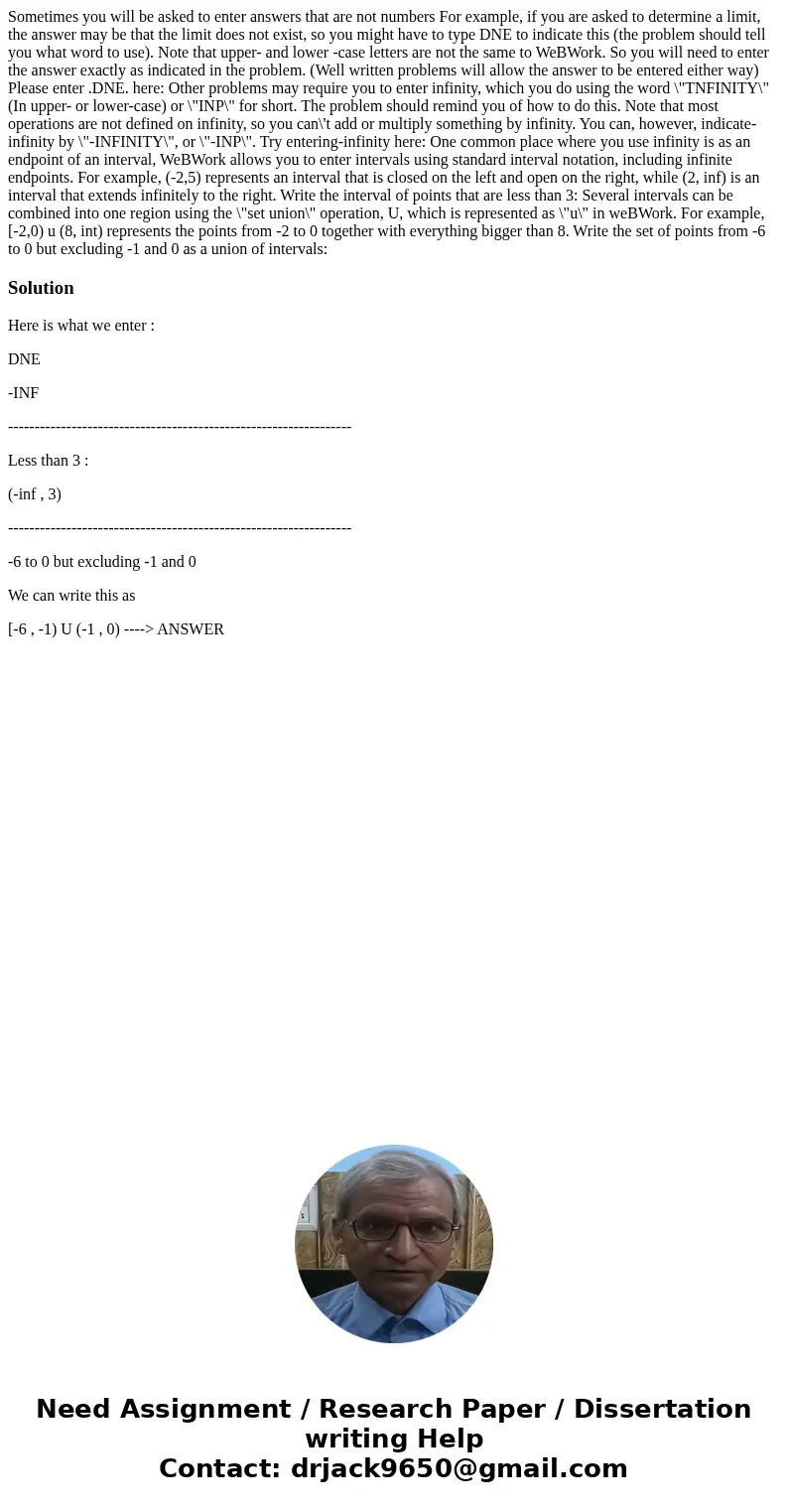Sometimes you will be asked to enter answers that are not nu
Sometimes you will be asked to enter answers that are not numbers For example, if you are asked to determine a limit, the answer may be that the limit does not exist, so you might have to type DNE to indicate this (the problem should tell you what word to use). Note that upper- and lower -case letters are not the same to WeBWork. So you will need to enter the answer exactly as indicated in the problem. (Well written problems will allow the answer to be entered either way) Please enter .DNE. here: Other problems may require you to enter infinity, which you do using the word \"TNFINITY\" (In upper- or lower-case) or \"INP\" for short. The problem should remind you of how to do this. Note that most operations are not defined on infinity, so you can\'t add or multiply something by infinity. You can, however, indicate-infinity by \"-INFINITY\", or \"-INP\". Try entering-infinity here: One common place where you use infinity is as an endpoint of an interval, WeBWork allows you to enter intervals using standard interval notation, including infinite endpoints. For example, (-2,5) represents an interval that is closed on the left and open on the right, while (2, inf) is an interval that extends infinitely to the right. Write the interval of points that are less than 3: Several intervals can be combined into one region using the \"set union\" operation, U, which is represented as \"u\" in weBWork. For example, [-2,0) u (8, int) represents the points from -2 to 0 together with everything bigger than 8. Write the set of points from -6 to 0 but excluding -1 and 0 as a union of intervals: 
Solution
Here is what we enter :
DNE
-INF
-----------------------------------------------------------------
Less than 3 :
(-inf , 3)
-----------------------------------------------------------------
-6 to 0 but excluding -1 and 0
We can write this as
[-6 , -1) U (-1 , 0) ----> ANSWER

 Homework Sourse
Homework Sourse